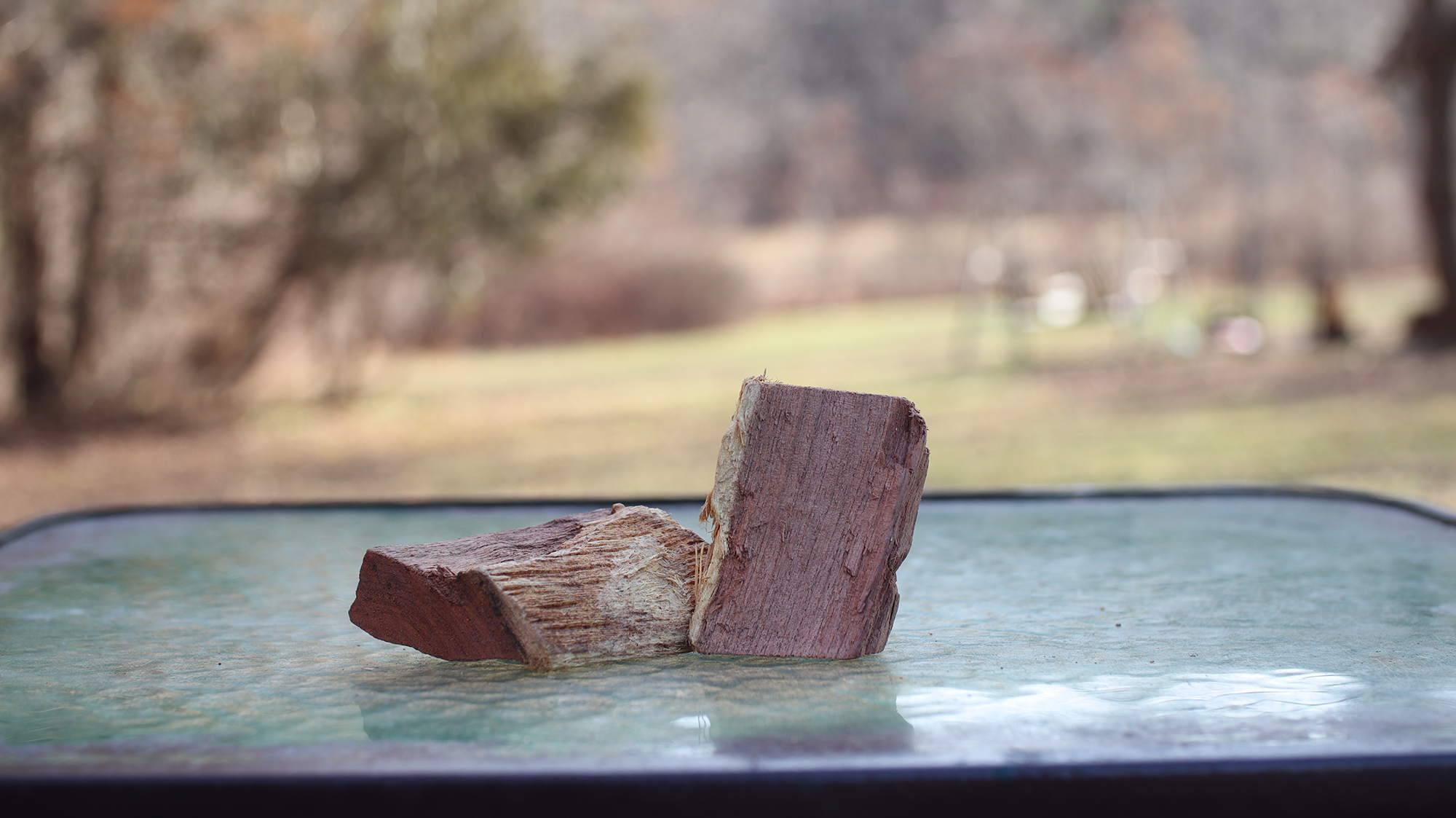With something like jerky, it’s incredibly important to understand the effects of wood smoke on the meat.
The smoke should be treated as a layer of flavor and the goal should be to taste the beef, the marinade, and then the smoke.
Not just smoke.
(Though, if that’s your goal, just use mesquite.)
1. Cherry Wood is My Favorite to Smoke with
Where I’m from, most of the beef jerky that is sold commercially is usually smoked with some form of fruit wood; Typically it’s either apple or cherry.

Typically my “order-of-taste” preferences are:
- Marinade ingredients
- Beef
- Smoke
With fruit wood smoke, it often isn’t on the nose.
Meaning, you won’t smell the smoke before you taste it.
Of these fruit woods, I’m big on using cherry because I find it’s the perfect compliment to the meat.

With other types of hardwoods like say hickory or mesquite, this order-of-taste can change.
Usually it goes like this:
- Smoke
- Marinade ingredients
- Beef
While that change might seem subtle, it’s not.
Depending on the hardwood you’re working with, that smoke will linger in the mouth and even overshadow subtle marinade ingredients or even mask the beef’s flavor.
Often this is why store bought smoked beef jerky will feature very simple ingredients.
For instance “teriyaki” is a flavor that’s often offered in smoked form because it’s sort of a monotone flavor.
To me, hardwood smoke for jerky is tertiary because it’s just another ingredient that I’m trying to exploit.
Typically I stick to 3-4 cherry wood chips every 45-60 minutes for 2 hours.
I then finish the beef jerky without any smoke until has the “spider webbing” I reference in this article.
2. Hickory When You Want More Smoke
Usually if something like cherry, peach, or apple aren’t enough smoke flavor, hickory or pecan are good options to use (pecan is a species of hickory).

Likely most articles will tell you that hickory is the best wood for smoking jerky.
However, after reading lots of those articles or comments, they’re usually written by people who use pellet cookers where-in the burning of the pellets is incredibly efficient.
It’s borderline to the point where the species of wood doesn’t tend to matter much.
To me, hickory smoke is a bit stronger than oak, but way more mild than mesquite. Of the times I’ve used it to smoke jerky, I typically stick to 3-5 wood chips the first hour and that’s it.
This is usually enough smoke without overpowering the palate.
3. Mesquite Wood for When You Want to Reverse Dylan’s Order of Taste
If after trying all the other hardwoods I listed above, you still find the meat wasn’t “smoky” enough, mesquite might be a good wood to experiment with.

In terms of smoke flavor, it’s best described as “strong” and can easily overpower your beef jerky. When used sparingly though, it works quite well.
If you’ve ever used mesquite to smoke with, you know it produces a lot of smoke; The reason it’s “stronger” has to do with the lignin content.
For this reason, at most I’d suggest starting with 3-5 wood chips, allow those to smolder, and then stop there. Finish off your jerky without any additional smoke, allow it cool, and taste.
If you still find the jerky wasn’t smoky enough, add 3-5 more wood chips after the initial 45-60 minute smoke time. Likely this should be enough smoke for you.
When I was a teenager, the first time I smoked jerky I did so for over 8 hours with mesquite and it tasted like creosote flavored teriyaki.
Suffice to say, it gets to a point where it’s too much smoke.




